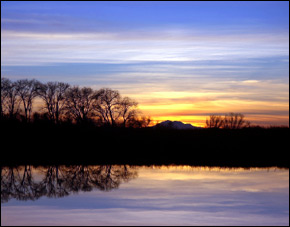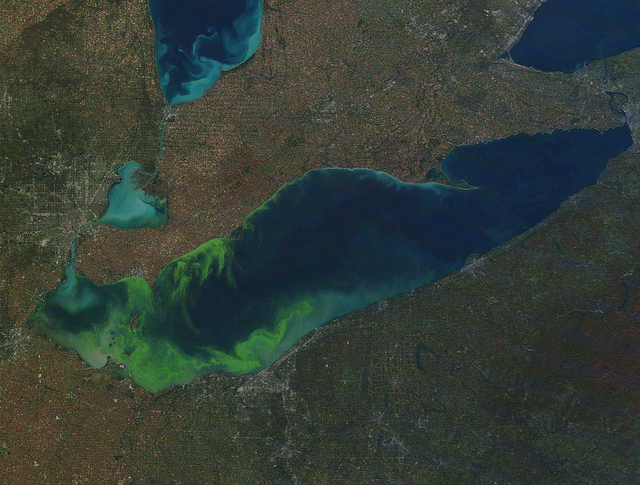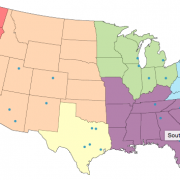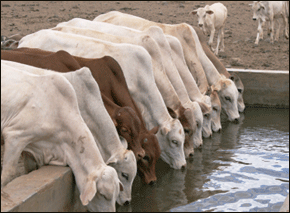Peter Gleick: Temperance Flat Reservoir Falls Flat
 Rigged Feasibility Study Shows Desperation for New Surface Reservoirs
Rigged Feasibility Study Shows Desperation for New Surface Reservoirs
A couple of weeks ago, the U.S. Bureau of Reclamation released its Upper San Joaquin River Basin Storage Investigation “Plan Formulation Report.” Despite its long name, and the very odd fact that it is dated October 2008 but was released just recently, this massive report is simply a feasibility study for the proposed Temperance Flat dam on the San Joaquin River — one of the two surface storage dams being intensively pushed by a few special interests as a critical solution to our water woes. This report, which I just managed to read, is remarkable. Its purpose is to show that Temperance Flat is feasible and makes sense. But in fact, this report actually shows that Temperance Flat is a bad idea, will create far fewer benefits than costs, and will be an ecological, recreational and economic failure. And the “new” water it will create will be minimal and hugely expensive.
The study looked at a wide range of dam projects but quickly rejected most of them as infeasible. They settled on four possible alternatives — a bigger and a smaller reservoir, with and without a new canal to move water across the valley (not the so-called “peripheral canal,” but a new local canal). Yet of these four alternatives, even the Bureau of Reclamation (BoR) couldn’t make the ones with the smaller reservoir create more benefits than costs. This left the big reservoir, with and without the canal. They then dumped the canal option, because it didn’t add any new net benefits. Thus, they could only make one possible configuration make sense. And here is the problem, even that configuration doesn’t make sense.
Water Number: 1.06
The best that the Bureau of Reclamation could do to make Temperance Flat look feasible was to come up with a benefit/cost ratio of between 1.00 and 1.06. 1.06? This means that even after rigging the numbers in favor of the project, they could barely make it appear that the benefits exceed the costs. And yes, the numbers are rigged. Certain “benefits” are exaggerated. Certain major costs are excluded. And even worse, other alternatives that can provide the same benefits at lower costs are simply ignored.
Here are a couple of examples just to give readers here a flavor. [The entire report would benefit from a smart independent economist reviewing all the assumptions and redoing all the benefit/cost assessment with more realistic numbers, but the BoR excludes most of the equations and actual numbers from this study]:
o The new reservoir will destroy riverine spawning habitat for American shad and striped bass, it will destroy nearly half of the trout habitat in the study area, and it may completely extirpate the shad population (among other ecological impacts they acknowledge but don’t quantify). What value does the BoR assign in their benefit/cost to these ecosystem losses? Zero.
o The new reservoir will destroy one of the few remaining free-flowing stretches of the San Joaquin with many long class 2, 3 and 4 rapids separated by long scenic pools used by rafters and kayakers. What value do they assign in their benefit/cost ratio to this loss? Zero.
o There are dozens of sacred Native American village, gathering, and religious sites in the area to be flooded. Even the BoR acknowledges over 150 archeological and historical sites in the area, without having conducted a comprehensive survey, and local Native American community representatives have strongly objected to the reservoir on these grounds. What cost does the BoR assign to this cultural destruction in their benefit/cost ratio? $6 million in construction costs for “mitigation” but zero for the destruction of these sites.
Most egregious is that around 80% of the project benefits supposedly result from improved water supply for municipal, industrial, and agricultural users. The problem is that they estimated the value of this benefit at “the estimated cost of the most likely alternative water supply” if the dam was not built. If 80% of the benefits of $169 million a year are attributed to water supply, and the project yields (at best) 180,000 acre-feet of water in an average year, the BoR is assigning a value of nearly $850 per acre-foot to these benefits. Yet the BoR explicitly excludes conservation and efficiency improvements, arguing they don’t exist in the region — a blatant falsehood. Because conservation and efficiency improvements are actually far cheaper than new supply, if they had used the “estimated cost” of improved efficiency, the value of the “benefits” of the water supply would drop substantially, and the “benefit/cost” ratio would plummet.
Finally, does anyone really believe that the construction cost — estimated in this report at over $3.35 billion — will not rise substantially? Has any major reservoir been built even close to the cost first estimated by the Bureau of Reclamation? Fix any one of these errors in the feasibility study and the benefit/cost ratio drops below 1. Fix them all and the project is an economic disaster.
Given the stark reality of these numbers, how can anyone still support Temperance Flat? Easy. The people receiving the benefits are not the people bearing the costs, many of which are public, environment, and cultural. Unless we have politicians willing to stand up for the public good, bad projects will continue to impoverish California’s environment, cultural history, and pocketbook, without fixing our water problems. This “feasibility” study puts a price on everything except the things with true value.
Dr. Gleick’s blog posts are provided in cooperation with the SFGate. Previous posts can be found here.













Mr. Gleick,
After 35 years of spending countless hours on Milertion lake and living in this area I find that some of your own deductions fall short from the truth.
1) Striped Bass and American Shad are not a native species to the San Jauquin tributary or Milerton Lake. As I am a perfesional fisherman I have become closer to a marine biolgist than my profession of an engineer. In this instance I can tell you Stripped Bass and American shad will still survive quite well in Millerton and the new proposed resevior. As you well know or should know the introduction of White Base to Millerton by individuals that do not understand the biology of our water shed required a substantial kill in Millerton Lake and several others in the central vally in the 1980s. It was not untill this time the Striped Bass were introduced ass well as some of the other lakes in the kill plan. The shad were planted after this as Striped Bass feed on any thing that moves including there selves on a massives bassis. To sustain this fishery and the new massive consumption of other species of fish American Shad were intruduced to fill the bellys of these fish.
On the economic side of the coin the primary quary for fisherman on this lake is Large Mouth Bass and Spotted Bass and accounts for about 98% of the revinue for fishing on the lake. In this case taking away the Striped Bass and the American Shad would increase the aboundence of the fishery and creat more revinues for this Valley. Increasing the Lake size would also help offset the invriomental impact that fishing naturaly has on a resivor. You probably will say how does this work, Increased water means a better inviorment for the habitat. This would occure in the large lake at Temprance Flate. The lower lake would improve as the drastic draw down on the bottom resivor would decrese duing the spawning season of the bass and thier forage on Milerton Lake.
To address the trout issue, what are you talking about?? There are NO trout in Millerton lake or the San Jauquin above Millerton Lake. Trout are below Millerton just for recreation and the additional storage would creat a better enviroment for these fish as well (??????).
2) Whight water rafting at Millerton ?? Again are you kidding. Agine 35 years I have navigated this lake and never seen what you are talking about. This is not the Kings River and Kirkoff Resivor does not release enough water for this unless it is an emergancy release. There is very little accesses to this area of the river unless you go by boat. This are area of the river would never be concidered by a scerious rafter let alone generate any revinue as there are certainly no guided rafting trips (there is no way out unless you ar going to paddel for six mile to recover you equipment).
3) Native sites, there is only a small section that has a house on the reservation side. Please note the reservation also supports the expanssion as this would create more revinew to the casino on the reservation. This is the Casino that provides thousands of dallors to or local school programs and local tax revinue. The new lake would also create an attractive spot for the cassino to build other attractions on the new lake providing the history of the same things that no one sees now anyway as there is no access to these areas anyway. This does not include the fact that the reservation does not spend any time or money to presservie these areas! Not sure which native Americans you talked to in this area (I know a few). If you think they are going to turn down increased revinue your crazy!
In your points: Rafters Contribute ZERO, Trout Fishing above Friant Dam ZERO, Stripped Bass a wooping 2% of the fishing industry that is easly made up by the improved conditions and if the Stripers stay, ZERO change. Native American Sites ZERO.
New Water: All the above contribute large increases with new water. Please note this is not speculation but fact. The fact the state does not report these fact is they probably treated it as a wash to stay conservitive as I wish were as a state.
Lets get real here, the cost of the project is projected higher then it should cost by a billion. The report did not also account for the revinue created locally by workers getting Jobs spending and spending money locally. It does not also account for the local resorces that will be needed that will also creat revenue in the local area. It will also creat relliable water store for the largest ag industry in the world. Reliable release from Millerton Lake helps eliminate salt water intrusion into the Delta. Tax payers due not have to support farmers by pumping Delta water to this area. I know the argument about it does not increase water storage but it does as every year is not a drought year as the adder storage can act as capacitor in our system.
I could go on but it is dificault to convence someone who gets his information from uninformed sources and does not investigate the issues himself. I would gladly debate this with anyone and other water issues with the state but bring your lunch, it is a mess, but they got this one right!!
It seems to me that the BoR may need to consider the currently proposed revision to the Principles and Guidelines being developed for all new federal projects. The new guidelines are being shaped at the direction of the Obama Administration (and by the CEQ) to include an evaluation of the non-economic costs and benefits for all such projects. This will necessitate a rethinking of how environmental, cultural and social benefits and costs are included in the development of project approval. Traditional Benefit Cost analysis may be dead as the nation struggles with a better integration of full cost accounting for factors that were previously discounted as mere externalities.
What we need in California is not a bunch of crying people who have nothing more to do than bitch, we need progression of water management to improve and increase our water inftrastructure to capture water that is available when it is needed. PERIOD!
Thx for this great information that you are sharing with us!!!